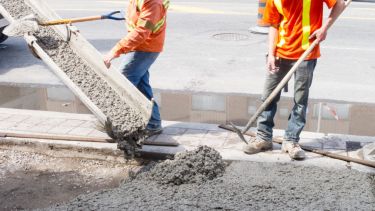Fiona McBride
Supervised by Dr Erica Ballantyne
What's the name of your project?
Capturing wasted energy from urban light rail systems to support fleet EV charging for urban and last mile delivery vehicles
What problem are you trying to solve with the project?
My work is all about a transition towards electric vehicles. In particular, I'm looking at ways urban electric vehicle charging could be linked with the electrical systems many cities already have in place for tram or light rail networks.
Trams use regenerative braking – whenever they need to slow down, they turn their motors into generators to convert their kinetic energy (speed) into electrical energy. In hilly cities like Sheffield, a lot of electricity can be generated this way. However, the way that many tram systems are built means that a lot of this energy often can't be used, so it just gets wasted. Other members of my research group have modelled tram systems to show that, if we put EV charging stations in the right places, we could use the EV batteries to put some of the energy back into the tram network and use any spare to charge the vehicles up. Teaming up the tram network with EV chargers could therefore reduce the electricity usage of the trams and charge some electric vehicles.
What are you aiming to achieve?
As tram systems usually use their own electric grid system, connecting EV chargers to it could serve as a means of increasing EV charging capacity in an urban area without putting extra stress on the main electric grid that serves the rest of the city.
The main aim of my research project is to investigate whether we can use these potential tram-based EV charging points to charge fleets of electric vehicles such as bin lorries or delivery trucks.
So far, I've been working on getting to grips with the project background. I've also been learning how to use models of the power use across tram systems in Sheffield and Edinburgh, and figuring out how to go about building my own that I can use to investigate the specifics of how to balance what could make the tram system most efficient with what would work best for EV users.
What are you most excited about?
I'm really excited about working on something that feels like it could feasibly be implemented within 5-10 years. Transport is a huge cause of carbon dioxide emissions currently, so I'm delighted to be part of making it less so, through reducing wasted energy on public transport and improving electric vehicle charging.
Micael Rubens Cardoso da Silva
Supervised by Dr Brant Walkley
What's the name of your project?
Novel Additives to Enhance the Performance of Low Carbon Cements for a Net Zero Future
What problem are you trying to solve with the project?
Cement is the ‘glue’ in concrete, the foundation upon which our modern civilisation is built. However, this comes with a huge environmental cost - cement production generates 8% of global CO2 emissions, and half of all materials extracted from Earth are used in concrete. Luckily, recently developed low-carbon alkali-activated cements that we are investigating show enhanced strength and durability, reduce CO2 emissions by about 80% compared to traditional cement, and are made almost entirely from industrial wastes.
These cements require superplasticising copolymer dispersants to improve workability and flow characteristics, particularly for ultra-high performance concrete. However, dispersant behaviour differs significantly in each case due to extensive differences between aqueous and solid state chemistry in these cements, compared to traditional cement.
What are you aiming to achieve?
In this PhD project we will examine the interactions between organic superplasticisers and inorganic cement particles in these next-generation low-carbon alkali-activated cements, and then use this knowledge to design novel superplasticisers with enhanced performance.
These new alkali-resistant high-performance dispersants are urgently required for the next-generation low-carbon cements, in order to make them practical for use in large-scale construction applications.
What are you most excited about?
I am very excited about the project as I will have the opportunity to work and develop new products on such an important theme within sustainability in construction.
The project has the potential to generate patents and scientific progress in the development of alternative binders to traditional cement, chemical additives, waste utilisation and investigation of the mechanisms and kinetics of the organo-inorganic interactions of some materials, seeking to understand their effects on cement performance.




